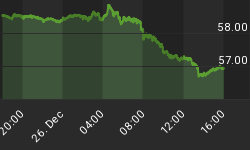Discussion with Jay Taylor and David Jensen on January 14, 2015
Video: The LBMA's Silver Criticality with Jay Taylor and David Jensen
Audio Only Version
Discussion to first address some definitions then focus on Silver Market on London's LBMA as it has the greatest disparity of open interest (claims on silver) vs actual available silver to market.
1) Review of some key definitions and data for Listeners
Spot contract trading of metal - trading immediate metal ownership contract
Forward position - forward metal delivery based on spot plus some fee
Futures - forward bet on price sometimes with option for delivery - usually can't affect spot price as primarily cash settled
Open interest - the total number of ounces of gold for which there are trading positions (claims for metal) in the market
Net settled clearing volume - the end of day net volume of trading when all of the credits and debits between members have been netted-out
2) LBMA report "Loco London Liquidity Survey" http://www.lbma.org.uk/Clearing-Statistics re. LBMA gold trading volumes (turnover) in Q1 2011
- in Q1 2011, average daily trading turnover of gold was 174 M oz. per day
- each trade averaged $39 M of gold
- ~ 10:1 ratio of daily gross trading volume vs average net cleared trading statistics (as posted online)
- the Liquidity Survey estimate of daily average trading volume was conservative - gold trading volumes are actually higher than estimate
- 90% of daily trading volume on the LBMA is spot gold trading and gold forwards are 5% of trading volume
Key items from the LBMA survey:
- survey is conservative estimate of daily trading volume - real volumes are higher
- 10:1 ratio gross gold trading turnover (volume) vs net settled volume at end of day
- 90% of daily gold trading volume in spot transactions impacting directly the global price of gold
- each trade averages $39M - note these trades are so large that they would dominate price discovery
3) LBMA report "Guide to London Precious Metals Markets" (gold, silver, platinum, and palladium) published on the LPPM website: ![]() http://www.lppm.com/OTCguide.pdf
http://www.lppm.com/OTCguide.pdf
- pg 12 (of 52) Majority of trading is in unallocated accounts - client purchasing metal does not have title to specific metal and is "an unsecured creditor"
- spot trades settled as "credits or debits to an account"
- credits to an account "do not entitle the creditor to specific bars of gold or silver"
- pg 16 Loco London (ie. LBMA) pricing is the basis for "virtually all transactions in gold, silver, platinum and palladium"; global price setting power of the LBMA for transactions involving precious metals traded using virtual unallocated metal.
4) The LBMA's Silver Criticality
http://www.lbma.org.uk/clearing-statistics

- Use the LBMA survey finding of a 10x multiplier to estimate gold and silver gross trading volume and open interests from end of day net-settled volumes
- Key: Open interest (claims on silver) far exceeds any fungible silver metal stockpiles currently available for delivery or to be produced in the near term
- LBMA silver positions are primarily unallocated "credits to an account" - not silver itself.
- LBMA metals accounts represent an expandable electronic repository of virtual gold and silver not actual metal bars themselves
- Silver jewellery in private hands is not reliable source of fungible silver supply in size
- Calls for delivery of any material amounts of silver through the LBMA will cause an enormous short squeeze and market disruption - invevitable.
- Use of virtual metal trading (unallocated spot metal positions) has broken the physical metals markets and created supply that does not exist to investors
- Suppressing gold and silver prices with artificial supply on the LBMA for decades has globally suppressed gold and silver prices and suppressed global interest rates (Gibson's Paradox) spurring in the global debt bubble
- Large institutional and sovereign investors sitting in LBMA gold and silver positions are sitting in virtual metal repositories; they are in line holding paper
- The LBMA silver market's paper imbalance is approaching a point of criticality where physical metal market dysfunction will drive metals exchange away from the New York and London to real physical metals exchanges like Shanghai where actual metal is traded in the spot market (i.e. to sell a spot contract you first have to deposit metal).
















